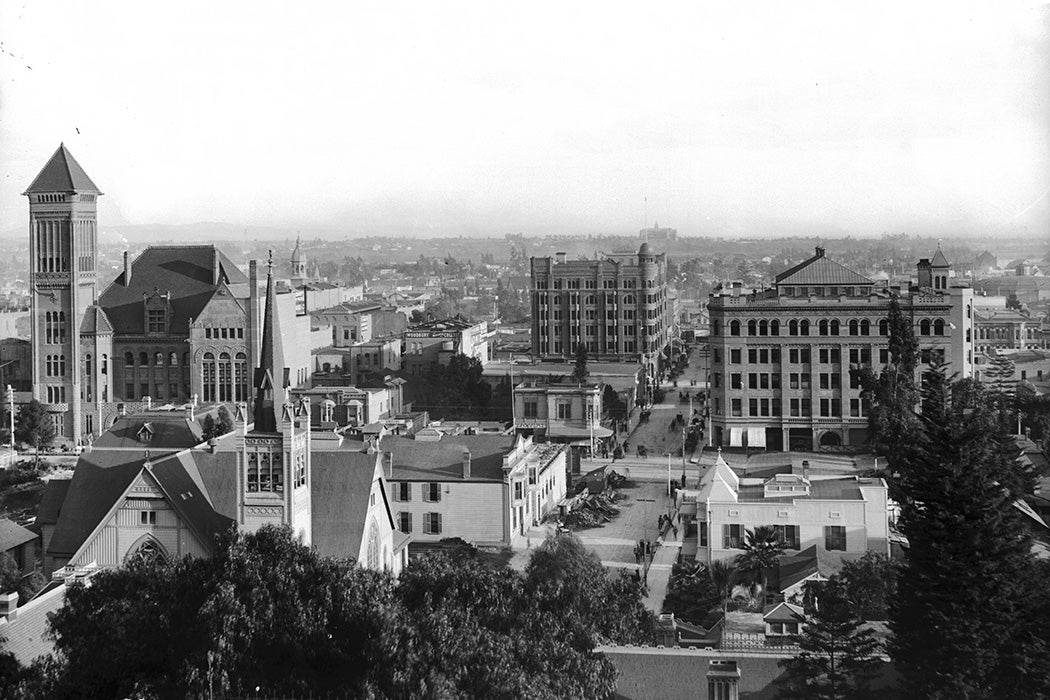If you know one thing about Los Angeles, it might be that it’s a city of sprawl, built around the assumption that everyone has a car. But, as historian Eric Stewart writes, the city’s spacious geography began taking shape long before that was the case, thanks in part to the very Victorian ideas of the white Protestants who dominated the city’s politics and economy in the late nineteenth century.
Starting in the 1870s, Midwestern WASPs poured into LA, bringing with them an enthusiasm for all things British. “Anglo newcomers increasingly mirrored popular British styles in fashion and architecture,” Stewart explains. The recently arrived marked Queen Victoria’s Golden Jubilee in 1887 and her 80th birthday in 1899 with great enthusiasm. And Victorian Angelenos worked to bring more people like themselves to the city, seeking to create a “white, moral city of leisure, a mecca of tourism, a metropolitan ‘health resort.’ But most importantly … Los Angeles was to be ‘a city of homes, and therefore a city without slums.’”
Inspired by Romantic views of nature, Anglo Angelenos promoted the development of single-family, suburban-style residential development as a way to provide urban professionals with clean air and a healthy lifestyle. Like reformers of the period from England to the US East Coast, they saw industrial cities as a morass of crime, disease, and immorality—all linked to high population density.
Stewart writes that the wealthy of LA competed with one another in designing elaborate Queen Anne-style gingerbread houses with turrets and gables. To allow for the spread of big houses across the landscape, the city improved its infrastructure in the 1870s and 1880s, resurfacing and widening roads, building streetcar lines, and extending water and sewer lines—focusing specifically on Anglo parts of the city while largely avoiding Mexican and Chinese neighborhoods.
As one turn-of-the-century writer described those years of development, “American energy, and life, and wealth, and modern progressive ideas took the place of Spanish ease and content, which always waited for mañana to do what should be done today.”
The growth of streetcar lines was both a response to and an enabler of residential sprawl, Stewart notes. By 1890, LA was the fifty-seventh largest city in the country in population but the fourteenth in street-rail mileage.
Weekly Newsletter
Thanks in part to this huge transit network, the city fulfilled its dreams of low-density life. In 1900, it had only 3.7 people per acre, compared with more than 15 in Boston and Philadelphia and a whopping 51 in New York. By the time denser cities began building their subway systems in the early twentieth century, LA was too spread out to make this economical.
But LA was becoming the country’s most congested urban area as cars joined its mix of streetcars, horse carriages, and pedestrians. Ever looking toward the next great thing, city leaders enthusiastically began redesigning their sprawling city in the 1920s, preparing for the era of the automobile.







